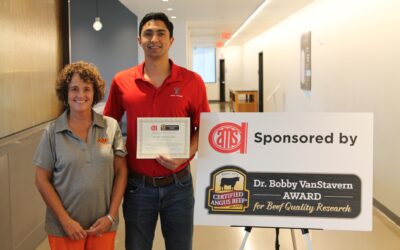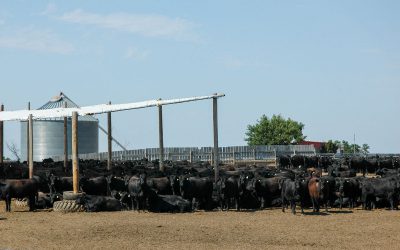
Feedlots must focus on efficiency, grade
February 25, 2011
You recently met Gary Fike, our beef cattle specialist from Kansas. His counterpart and partner in feedlot focus is Paul Dykstra, who resides in Chappell, Neb. He’s our local guru on beef grading trends, and he’s certainly got a way with numbers that could make any economist blush. Enjoy! – Laura
My recent feedlot visits in western Nebraska brought about several frank discussions with feedlot managers facing increasing costs of production. If “efficiency” was the word of the day, then we might as well just write it on the board with permanent marker.
Current corn prices are hard to fathom, along with other rising inputs. Fortunately, fed cattle futures and spot market prices are keeping lock-step with higher feeding costs, for the moment, but the outlook isn’t pretty.
Somehow we continue, as an industry, to produce more with less. Not only are we making more beef with less cattle, we’re making better beef with higher feed costs. It doesn’t seem intuitive, but that’s what’s happened.
In 2010 the U.S. average percent Choice was 61.47%, up 2.94 points above 2009. The Prime grade averaged 3.15%, 0.61 points higher than 2009, and Certified Angus Beef® brand acceptance percentages are at an all-time high.
So this brings me to the issue of supply and demand. We have more of the higher grading beef products than we’re used to, so we need to evaluate what kind of cattle we’re producing and if the market is still asking for those higher grading cattle. Here’s why:
- The 2010 USDA weekly data pegs the annual Choice/Select price spread at $6.30/cwt., $1.20 higher than the 2009 average.
- So, in Nebraska (the toughest of the Big 3 packing states to achieve quality grade premiums) packers would have paid roughly 40% of the Ch/Se spread for every Choice carcass sold on a grid.
- That’s figured using a packing plant weekly average of 60% Choice. As well, the average Certified Angus Beef® brand premium was $2.78/cwt. in 2010. It’s higher on some grids, but that’s the weighted average.
- On average in 2010, a CAB® brand, Yield Grade 3 carcass brought back a total premium of $5.30/cwt. above the weekly average carcass price. Not nearly as good as the huge premiums feeders enjoyed in 2006, but $45.00 per head will get anyone’s attention.
If we take a completely different animal, say a Select, Yield Grade 1, that carcass would have initially paid a premium of $3.83/cwt. due to the leanness and Yield Grade advantage. But, coupled with the discount for Select (-$6.30/cwt., below Choice), the net is a $0.05/cwt. premium over the weekly carcass price.
We might consider that a CAB®, Yield Grade 1 carcass would have been the best of both worlds, but those are a very rare occurrence. The average for Nebraska cattle is 60 to 70% Choice, and somewhere in the neighborhood of 10% Yield Grade 1’s, 20% Yield Grade 2’s, 60% Yield Grade 3’s and 10% Yield Grade 4’s. That’s ballpark. So, we just don’t make very many Yield Grade 1 carcasses, and it’s a good assumption that those are not the higher marbling cattle.
Mathematically, it just makes sense to feed quality cattle to their optimum carcass endpoint of about a half-inch of backfat without passing the point at which they stop converting that high-priced feed efficiently.
Economics tell us quality still pays. What does your math tell you? What are you doing in response to record corn prices?
You may also like
Purpose Follows Passion
A chance opportunity. A change in career direction. And meat science was changed forever. Dr. Gary Smith originally had no plans to become a meat scientist. But thank goodness he did.
Certified Angus Beef Recognizes Beef Quality Research
First-place honors go to Andres Mendizabal, an international student pursuing a Ph.D. in animal science at Texas Tech University. His research is titled, “The Accuracy of USDA Yield Grade and Beef Carcass Components as Predictors of Red Meat Yield.”
Not all good days are sunny and warm
Stress of any kind affects performance and health, but also well-being and behavior, a special focus for CSU animal scientist Lily Edwards-Callaway. Her team’s literature review found shade benefits vary by location, structure type and the weather.



